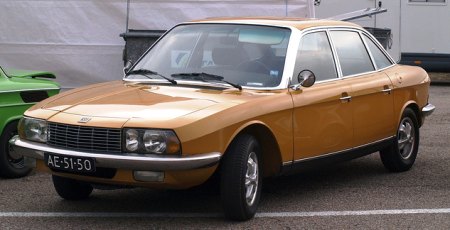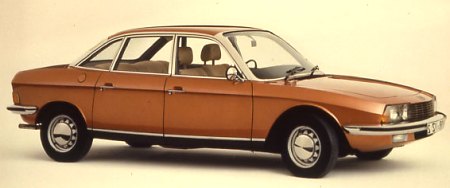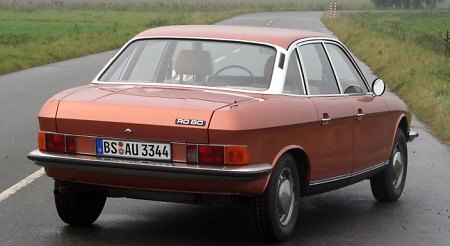 Ro 80 was famous for
being the first mass production car featuring rotary (Wankel) engine.
Unfortunately, that engine was also the cause of its failure, which
killed not only the car but also its maker NSU.
Back in 1967, the Ro 80 was probably the most technologically advanced production car in the world. Its twin-rotor engine, invented and developed by German engineer Dr. Felix Wankel, was considerably smaller and lighter than conventional piston engines, and was renowned for turbine-smooth operation. Each combustion chamber displaced 497.5 cc thus the engine was equivalent to a conventional 2-liter unit. It produced 115 horsepower and enabled a top speed of 112 mph. The rest of the car was equally state of the art. Its body shell was shaped in the wind tunnel of Stuttgart Polytechnic, delivering an impressive aerodynamic drag coefficient of 0.355. Its modern design was well ahead of its time and foresaw the cars of the 1980s (in particular the game-changing 1982 Audi 100). Its 3-speed semi-automatic gearbox featured a torque converter and an automatic clutch triggered by a micro switch on the gearstick. It got all-independent suspensions, all-round disc brakes, rack-and-pinion power steering and front-wheel drive. Since Citroen DS, cars had never been so futuristic!  However, the radical decision to adopt Wankel engine turned
out to be wrong and fatal. Not only it was thirsty, it suffered from
excessive wear on rotor tip seals, causing leakage between
combustion chambers, hence power loss, deteriorating fuel consumption
and even complete crack down. The whole engine had to be rebuilt or
even replaced as early as 30,000 miles! The reliability and durability
problems led to huge warranty expenses while poor reputation drove
customers towards rivals Mercedes and BMW. Although NSU had largely
sorted the problems in later years, it was too late. The company was
rescued by Volkswagen in 1969, merged with Auto-Union and formed the
modern Audi. The Ro 80 itself survived until 1977, then the Neckarsulm
factory was converted to assemble Porsche 924.
 Reliability problems aside, contemporary road testers loved
Ro 80 very much. Despite of lacking low-down torque and outright
performance, they praised the car for smooth and quiet power delivery.
The ride and handling was very good for a premium car. Its soft-setting
and long-travel suspension delivered a French-style supple ride.
Although understeered and rolled more in corners than some driver's
cars, it offered good traction and roadholding. Excellent high-speed
stability and minimal wind noise made it a great Autobahn cruiser. The
power steering offered class-leading weighting, precision and feel.
Inside, the cabin was spacious and the seats were comfy. Slim pillars
and large windows afforded excellent visibility. No wonder it was
elected as European Car of the Year in 1968. That happened before its
reliability problems uncovered, of course.
No matter how brilliant it was, the Ro80 became the victim of its troublesome rotary engine. However, Wankel engine did not disappear from the world. Just a year after the demise of Ro 80, Mazda introduced RX-7. Having spent a lot of effort improving the design, the Japanese finally sorted out its sealing problems and made it practical for real-world use. What a pity NSU and Dr. Wankel did not do the same before fitting to the Ro 80. |